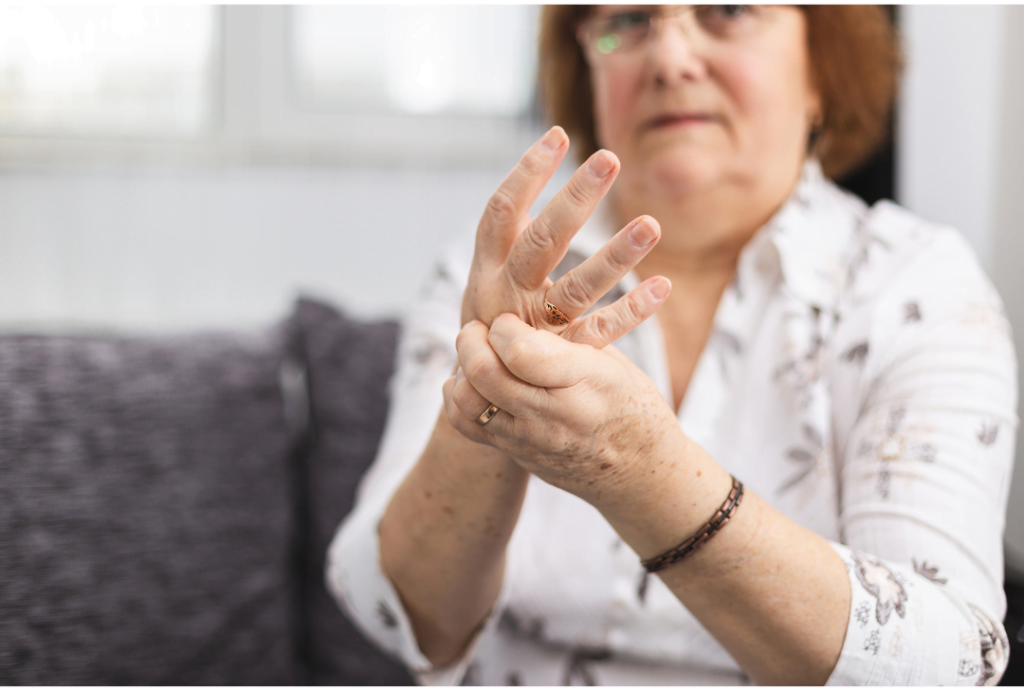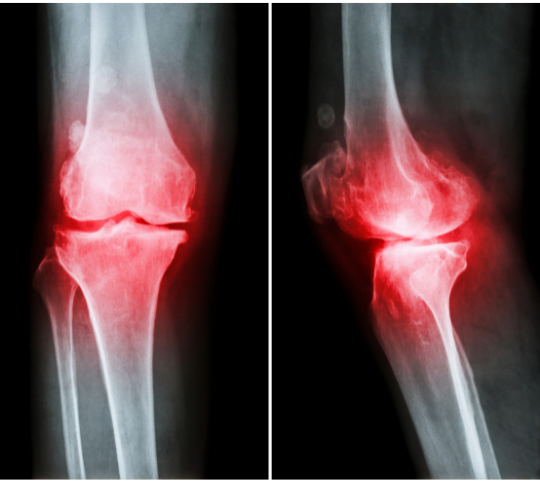Are you:
A 83-year-old woman struggles to get out of bed each morning due to crippling osteoarthritis pain?
OR
A 68-year-old man can no longer play with his grandchildren due to the pain and stiffness in his joints?
OR
A 55-year-old woman has to give up her beloved hobby of gardening because her osteoarthritis makes it too difficult to kneel down?
OR
A 45-year-old man can no longer work as a carpenter because the pain in his hands makes it impossible to hold tools?
OR
A 32-year-old woman is in constant pain and has difficulty doing everyday activities such as cooking and cleaning due to her osteoarthritis?
You are not alone!
Roughly 20% of Canadian adults (20 years old and above) suffer from a type of arthritis, with around 13.6% of which suffer from osteoarthritis.
What is osteoarthritis?
Osteoarthritis is a type of arthritis that is caused by the breakdown of cartilage. Cartilage is the material that cushions the ends of the bones in your joints. When the cartilage degenerates and breaks down, it can cause pain, swelling, and stiffness.
It should be noted, though, that osteoarthritis IS NOT an autoimmune disease.
Osteoarthritis is the most common type of arthritis. It usually affects people over 50 but can also affect younger people. Osteoarthritis can occur in any joint in the body, but it most often affects the hands, knees, hips, and spine.
What causes osteoarthritis?
The exact cause of osteoarthritis is unknown. However, some risk factors can increase your chances of developing the condition. These include:
• Age: The risk of osteoarthritis increases as you age. This is because the cartilage in your joints wears down over time.

• Obesity: Being overweight or obese puts extra stress on your joints, which can damage the cartilage.
• Joint injury: An injury to a joint, such as a fracture, can increase your risk of developing osteoarthritis in that joint.
• Repetitive motion: Making the same motion over and over again can damage the cartilage in your joints.
What are the symptoms, and how do you feel when you have osteoarthritis?
The symptoms of osteoarthritis can vary from person to person. They may come and go, and they may get worse over time. The most common symptoms include:
• Pain: The pain of osteoarthritis can range from mild to severe. It may be worse when you move the affected joint or put weight on it.
• Stiffness: You may feel stiffness in the affected joint, especially after you have been inactive for some time. The stiffness may go away after you move the joint.
• Swelling: The joint may swell and feel warm to the touch.
• Crunching feeling: You may feel a crunching sensation when you move the joint. This is caused by the bones rubbing together.
• Limited range of motion: The joint may not move as well as it used to.
How is osteoarthritis diagnosed?
Your doctor will ask about your medical history and symptoms. He or she will also do a physical exam. X-rays, MRIs, and other imaging tests may be used to look for damage to the joint.
How is osteoarthritis treated?
There is no cure for osteoarthritis, but there are treatments that can help relieve the pain and improve joint function. These include:
• Pain medications: Over-the-counter pain relievers, such as ibuprofen, and acetaminophen, can help relieve the pain of osteoarthritis. Your doctor may also prescribe stronger pain medications. You can get any OTC and/or prescriptions at our southeast Calgary location at Ogden Pharmacy.
• Supplements: Over-the-counter glucosamine sulphate can help provide a temporary protective layer for your cartilages at joints. You can buy those from Ogden Pharmacy.
• Exercise: Exercise can help improve joint function and reduce pain. Your doctor may recommend a physical therapy program to help you get started.
• Weight loss: This can help to reduce the load on the joints and relieve pain.
• Joint protection: You can help reduce the stress on your joints by using devices such as canes or splints.
• Complementary therapies: Therapies such as hot or cold therapies, and acupuncture, may be used to relieve pain.
• Surgery: In some cases, surgery may be needed to repair or replace a damaged joint.
Can osteoarthritis be prevented?
There is no sure way to prevent osteoarthritis. However, you can help reduce your risk by maintaining a healthy weight, exercising regularly, and avoiding joint injuries.






